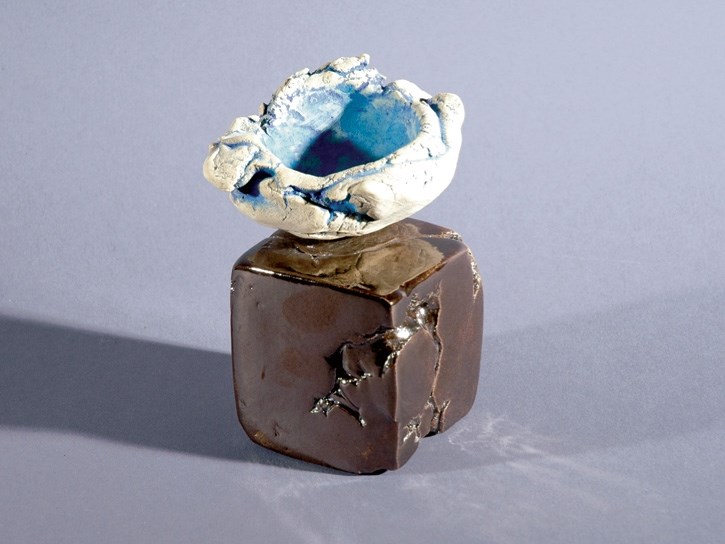As a young artist, Ed Bamiling participated in the development of the paper clay process at the Banff Centre.
Now, as director of the ceramic program at the facility, he continues to work with the medium. Paper clay allows for a greater flexibility in design and manipulation through the incorporation of a large amount of cellulose within the clay body. This affords the artist increased freedom in form.
Where there is a gain in flexibility to develop typically difficult shapes and details, there is a shift in normal processes of working with clay. Greater percentages of cellulose greatly alter drying and firing processes, as well as other technical considerations during the sculpting process.
This necessarily demands greater attention to such things as shrinkage values during the stages of development from clay to fired object. In other words, paper clay is a technically challenging but esthetically rewarding medium; and now Bamiling’s latest paper clay pieces may be viewed in their entirety during an exhibit entitled Whimsy Cups, on until Jan. 21 at Banff’s Willock & Sax Gallery.
“These pieces have a rougher surface than he has done before and it’s exciting that he’s pushing further than what he had before because, of course, Ed doesn’t do functional work,” said gallery co-owner Susan Sax-Willock.
“When he first introduced them to us, he said it has evolved, since some of his sculptural work are actually pieces from other pieces and because of the process of how he fires them.”
Paper clay is an interesting clay in that it’s a composite of clay and cellulose; not only does it dry differently and fire differently – they can fly apart, shatter more easily than a normal clay body would do and consequently, Bamiling ends up with pieces to incorporate into new art.
“Ed was working with the paper clay and there’s apparently significant forces that happened with the reactions of the oxides, the glazes and the clay, leaving him with pieces of things. And instead of going onto the scrapheap, he wanted to work with the idea of taking fragments and composing aspects and composing pieces that involved all of these fragments. That’s where it all came from and he did a number of wall pieces very much in that style,” said Sax-Willock.
“You could see the extent for what the paper clay allows for form, especially with the bottom bases. It allows a lot more freedom as far as what comes out of his form, so that’s where he’s retained that aspect with the whimsy cups.”
The cup itself is hand-formed, then he glazes and uses oxides, but he purposely keeps a brittle or rough texture look, wanting the pieces to give a sense of being of the earth.
As Bamiling says “it’s geology and natural forces.” Then with the bases on the cups, he does the cubes and he does individual cubes without the cup, compressing the paper clay into a certain form.
Some include ghostly lettering imprinted into the bases. “It gives that sense of more human time on them, so he’s playing with all of those evocative aspects of the pieces,” Sax-Willock said.
“When you look at them, you bring something to it with your own personal experiences – he wants to evoke the concept of the earth and of time, geology and natural forces. And yet they are formed.”




